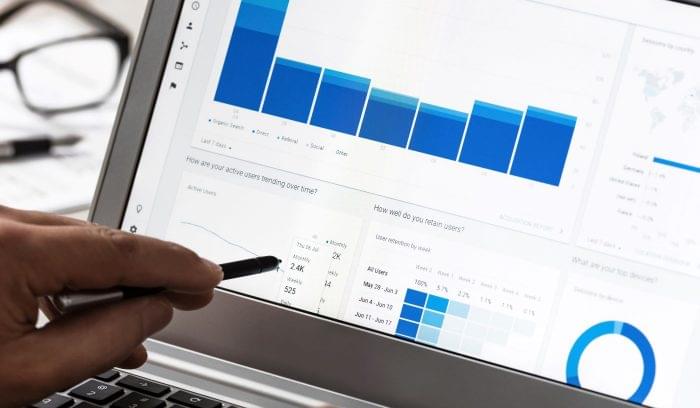On July 1, 2023, Google Analytics 4 will take over all traffic processing, officially retiring Universal Analytics. However, the rollout will take a few months, so some businesses may lose access to Universal Analytics sooner than others. Google Analytics 4 is already available, meaning it’s a good time to start making the switch.
According to Google, Analytics 4 should be able to measure multiple types of data, and users will gain access to Google’s machine learning capabilities for new insights. But what does this mean for your SEO strategy?
Cross-Platform Analytics
As opposed to sessions, which is what previous versions of Google Analytics tracked, Google Analytics 4 will focus on tracking events (page views, clicks, form fills, etc.). This gives users a better idea of how customers move through their sales funnel. Marketers create unique User IDs for customers, connecting events across different platforms to identify all of the actions a user takes before making a purchase or leaving the site.
However, User IDs are only helpful if the organization has a way to identify users, like an email address from a login page or form fill. Alternatively, marketers can enable Google Signals, which tracks users as long as they’re logged into their Google account and have ad personalization turned on. At this time, cross-platform analytics may not be as accurate for new visitors to a site.
Read more: Owned Audience: How to Build an Audience for your Business
Less Reliance on Cookies
Privacy laws like GDPR are beginning to crack down on cookie tracking, so Google Analytics 4 is attempting to help marketers track conversion data while preserving customer privacy. It offers a consent opt-in for analytics and ads to help marketers gather information about their visitors without violating privacy regulations, and offers data deletion capabilities.
“The norm is that we’re going to have a mixed set of data: We’ll have event data but not necessarily a user identifier associated with it. We’ll have gaps in data altogether and this is going to be true of all measurement providers,” said Russell Ketchum, Group Product Manager of Google Analytics. “As we get into next year, we’re going to be using machine learning modeling to support various modes of analysis in Google Analytics.”
While less cookie tracking is a good thing for consumers, it means marketers will need to build better relationships with their customers and prove their data is secure. Trust is the only way site visitors will feel comfortable allowing their data to be tracked.
Listen to: How to Succeed in the Age of the Anonymous Buyer
Greater Visibility Into Customer Lifecycles
The more visibility marketers have into the customer journey, the better they can target campaigns. Cross-platform analytics helps organizations track the journeys their known users take, so they have a better understanding of what users need before they’re ready to convert.
The system also assigns conversion values to each event using machine learning. These conversion values tell marketers what actions on what devices are most likely to drive conversions. Then, they can drive traffic towards key pages through their ads, pushing unknown users to follow the journeys that are likely to convert.
Read more: 4 Ways to Optimize Your Landing Page for Conversions
Predictive Insights
Google Analytics 4 also provides access to Google’s machine learning models. These algorithms can analyze the user journey and predict the next action potential customers might take. Two of the predictive metrics that Google Analytics 4 offers are Purchase Probability and Churn Probability.
Purchase Probability predicts the likelihood of the user making a purchase within the next week, while Churn Probability predicts the likelihood of the user not visiting your site or app within the next week. These metrics help marketers target ads that can encourage potential purchasers to buy, or attempt to retain users who might abandon their journey altogether.
Analytics 4 can also build predictive audiences, which marketers can then use for targeted ad campaigns. For example, a group filled with potential churn candidates might receive ads directing them to a highly viewed article on the organization’s site to get them to re-engage. Notably, predictive audiences must be based on at least one predictive metric.
Google Analytics 4 Improves Data-Driven Marketing Strategies
Google Analytics 4 makes it easier to create highly targeted campaigns that are more likely to convert, rather than relying on mass marketing strategies. With cross-platform data and predictive analytics, marketers gain more visibility into the customer journey, allowing them to determine how likely it is that a customer will make a purchase — and then nudge them towards conversion.
However, Google Analytics 4 isn’t a marketing strategy in and of itself. Businesses will need additional marketing software to capitalize on the insights they gain from the new platform. To find the perfect marketing tools to fit your needs, visit our Marketing Product Selection Tool. In just five minutes, you’ll get a free, unbiased list of software recommendations.
Read next: B2B Marketers Share the Tools They Can’t Work Without

